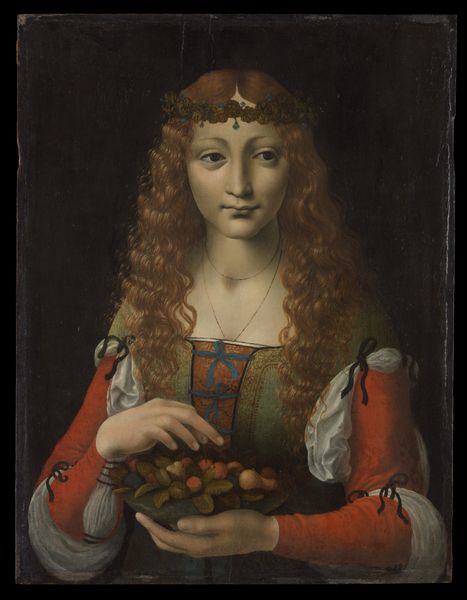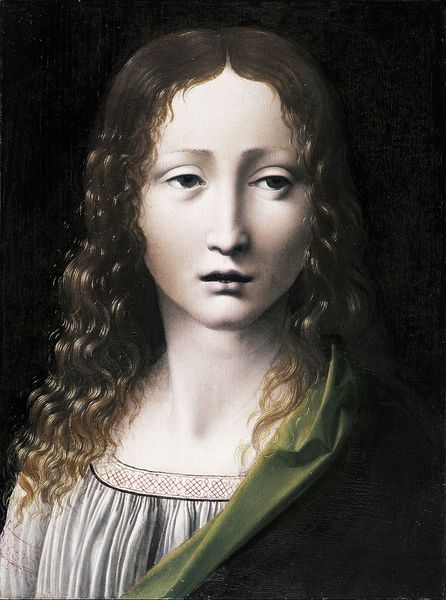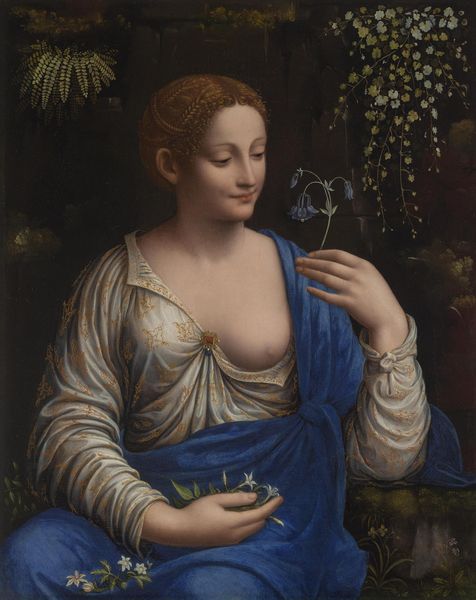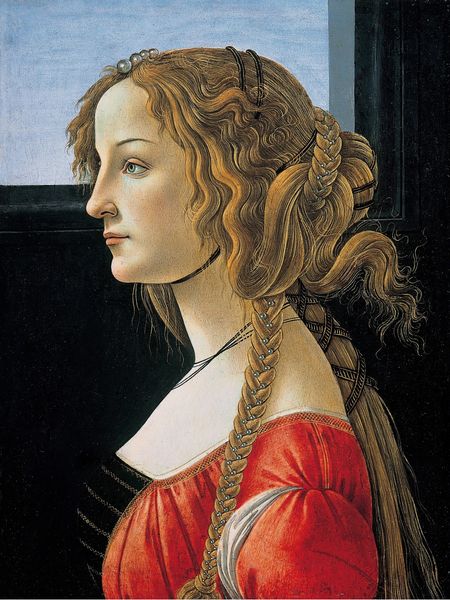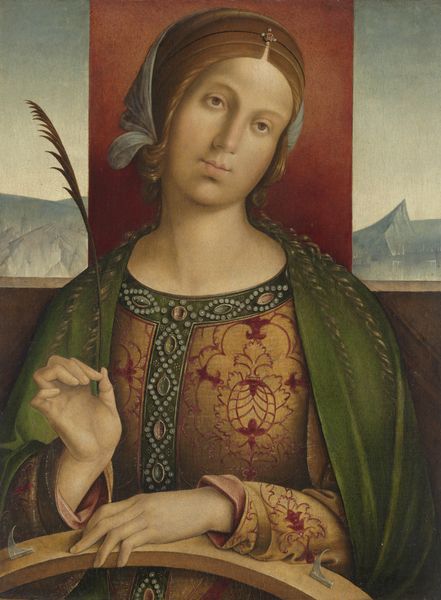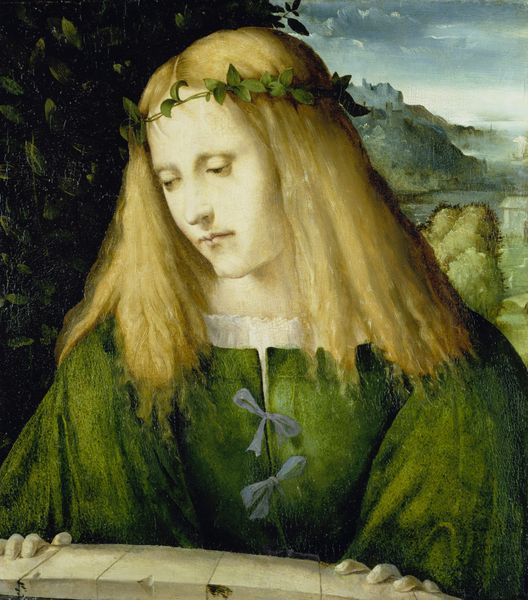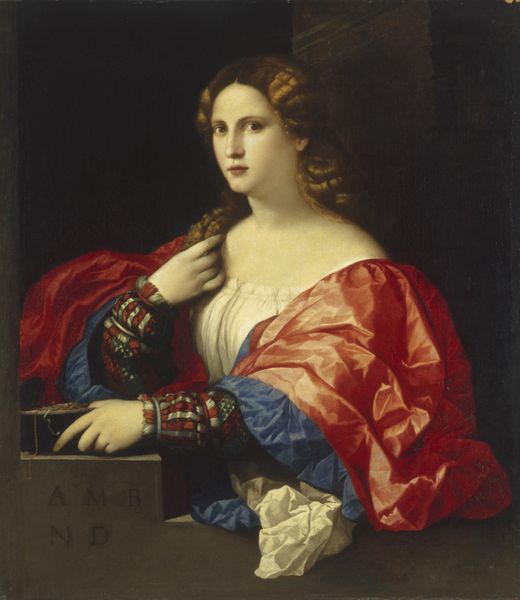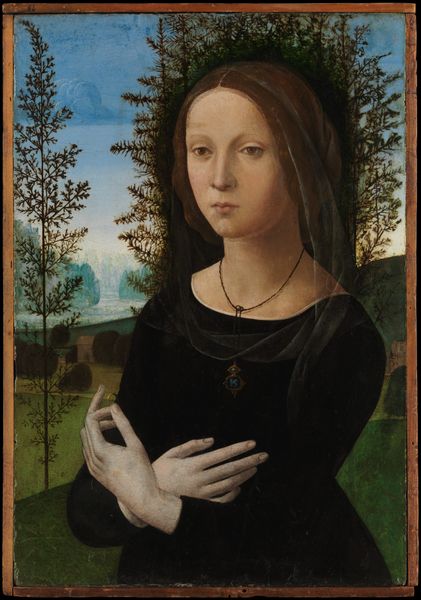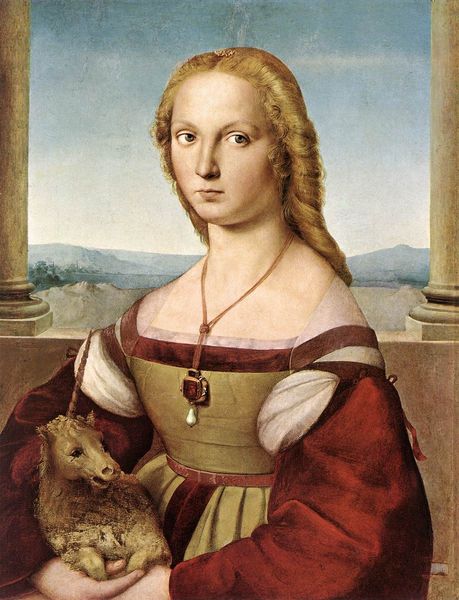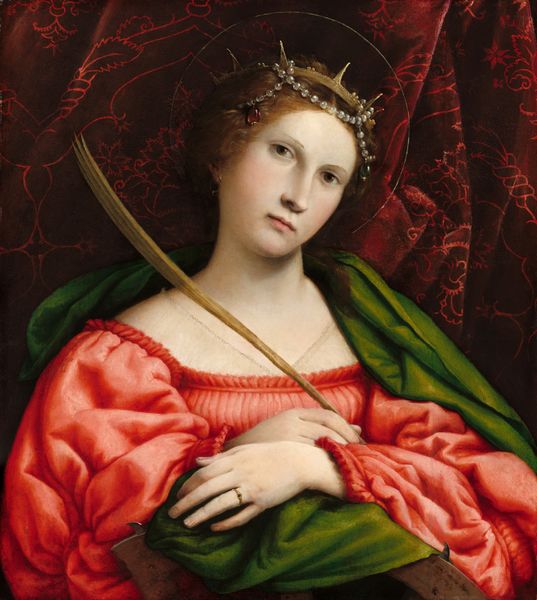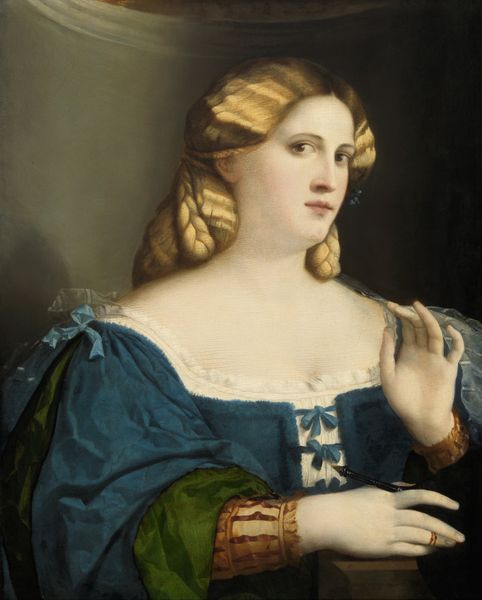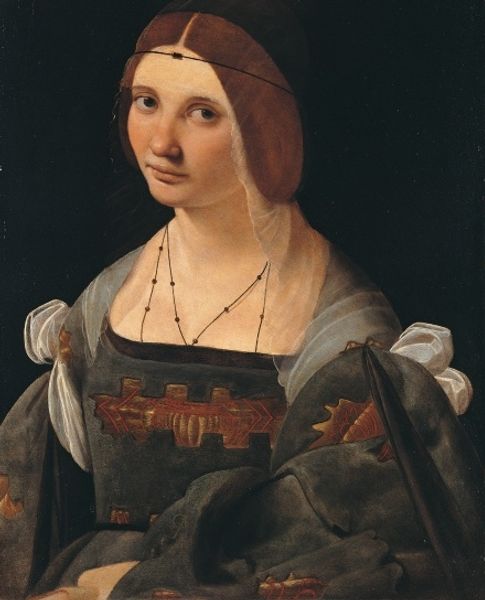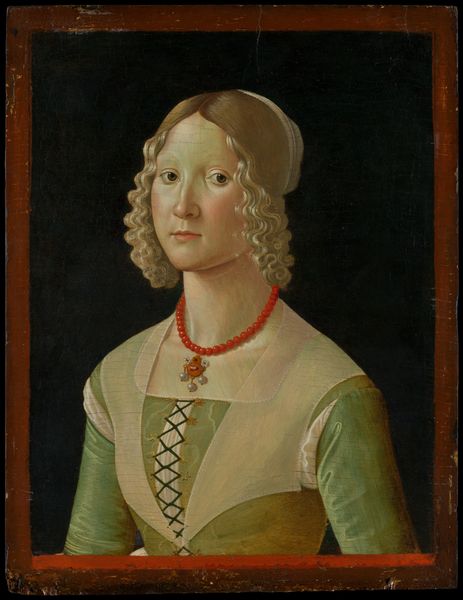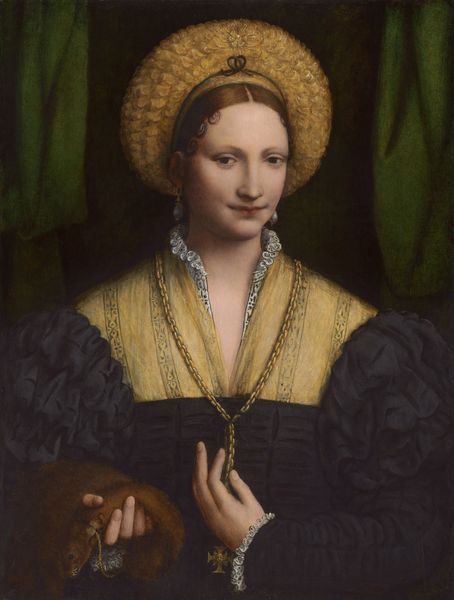
painting, oil-paint
#
portrait
#
high-renaissance
#
allegory
#
narrative-art
#
painting
#
oil-paint
#
italian-renaissance
Dimensions: overall: 58.8 x 47.8 cm (23 1/8 x 18 13/16 in.) framed: 75.4 x 65.3 x 7 cm (29 11/16 x 25 11/16 x 2 3/4 in.)
Copyright: National Gallery of Art: CC0 1.0
Curator: This is Bernardino Luini's "The Magdalen," painted around 1525, rendered beautifully in oil. What’s your first take on this striking figure? Editor: She's arresting. Her gaze holds this gentle melancholy, like a fading melody. It’s subtle, almost imperceptible at first glance, but profoundly present. The chalice feels symbolic, like she's about to offer or receive something sacred, or maybe it represents grief? Curator: Indeed. As a High Renaissance piece, this painting showcases a renewed interest in classical ideals of beauty and serenity. Mary Magdalene was often portrayed with an alabaster jar or chalice of ointment, referencing the biblical story of her anointing Jesus’s feet. Luini portrays her as both worldly and spiritual, which encapsulates a shift in representing religious figures at the time. Editor: Worldly for sure, even with the overt religious symbolism, she's painted with a sensuality. And her dress feels so real, as if you could reach out and touch it. There’s almost a theatricality about her posture. Does that come across to you, the stage-like presentation? Curator: Yes, this performative aspect mirrors the evolving role of art as a tool of Counter-Reformation. The beauty of Magdalen—Luini renders her as an appealing, relatable figure to elicit devotion. Her open, gentle expression beckons the viewer to empathize and reflect. The placement of the chalice is also critical; it directs the viewer to this idea of purification and faith, reinforcing the message of repentance and divine grace. Editor: It works. The light emphasizes the texture of the chalice, her skin, and then you’re drawn to her eyes. It’s like being asked a question, but I’m not sure what it is! Luini has so elegantly manipulated both colour and composition here to evoke a tangible emotional response. Curator: Absolutely. “The Magdalen” is exemplary of the Italian Renaissance. We get both exceptional artistry but the potent use of symbolism for reinforcing cultural and religious ideas. It allows for a deep consideration into the visual strategies and socio-political environment of the period. Editor: Yes, now I understand what that unasked question means to me; Luini makes me yearn. That potent combination of beauty, melancholy, sensuality, grief - it just grabs you. It also goes to show what an artist can achieve when mastering oil paints!
Comments
No comments
Be the first to comment and join the conversation on the ultimate creative platform.
